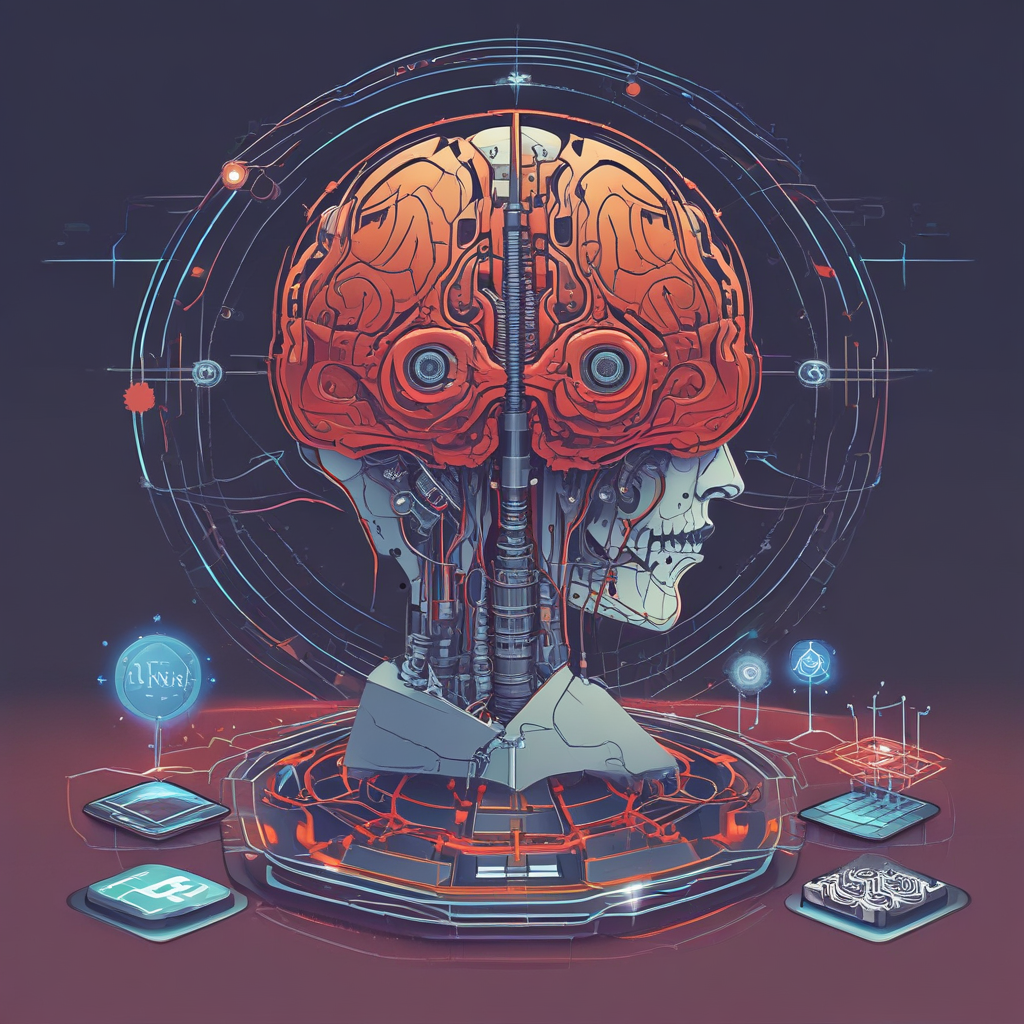AI-driven Strategies for Profit Generation

AI-driven Strategies for Profit Generation
5 Ways AI is Transforming the World of Finance – In this blog post, explore how AI is revolutionizing the finance industry by improving risk management, enhancing fraud detection, optimizing investment strategies, and streamlining financial planning
In recent years, artificial intelligence (AI) has emerged as a game-changer in various industries, and finance is no exception. The finance industry has been quick to adopt AI-driven strategies for profit generation, as it offers numerous benefits such as improved risk management, enhanced fraud detection, optimized investment strategies, and streamlined financial planning. In this article, we will explore how AI is revolutionizing the finance industry in these areas.
Improved Risk Management
One of the most significant benefits of AI in finance is improved risk management. AI algorithms can analyze vast amounts of data in real-time, enabling financial institutions to identify potential risks and opportunities more accurately and quickly. This helps financial institutions to make informed decisions, minimize losses, and maximize profits.
For instance, AI-powered risk management tools can analyze historical data, market trends, and other factors to predict the likelihood of a financial event, such as a stock price drop or a credit default. This enables financial institutions to take proactive measures to mitigate risks and minimize losses.
Enhanced Fraud Detection
Another area where AI is making a significant impact in finance is fraud detection. AI algorithms can analyze large volumes of financial data, detect patterns, and identify anomalies that may indicate fraudulent activity. This helps financial institutions to prevent fraud, minimize losses, and protect their customers’ financial interests.
For example, AI-powered fraud detection tools can analyze transaction data, identify unusual patterns, and flag potentially fraudulent transactions for further review. This enables financial institutions to take swift action to prevent fraud and protect their customers’ financial interests.
Optimized Investment Strategies
AI is also transforming the way financial institutions manage investments. AI algorithms can analyze vast amounts of financial data, identify trends, and make informed investment decisions. This enables financial institutions to optimize their investment strategies, minimize risks, and maximize returns.
For instance, AI-powered investment management tools can analyze historical data, market trends, and other factors to predict the performance of different investment options. This enables financial institutions to make informed investment decisions, minimize risks, and maximize returns.
Streamlined Financial Planning
AI is also transforming the way financial institutions manage financial planning. AI algorithms can analyze vast amounts of financial data, identify trends, and make informed financial planning decisions. This enables financial institutions to streamline their financial planning processes, minimize risks, and maximize returns.
For example, AI-powered financial planning tools can analyze historical data, market trends, and other factors to predict the performance of different financial planning options. This enables financial institutions to make informed financial planning decisions, minimize risks, and maximize returns.
Conclusion
In conclusion, AI is revolutionizing the finance industry by improving risk management, enhancing fraud detection, optimizing investment strategies, and streamlining financial planning. As AI algorithms continue to evolve, we can expect even more significant benefits in these areas, as well as new and innovative applications of AI in finance. Financial institutions that embrace AI-driven strategies for profit generation will be better positioned to succeed in a rapidly evolving and increasingly competitive finance industry.
The Future of Retail: How AI is Driving Sales and Customer Experience – Discuss how AI is transforming the retail industry by enabling personalized shopping experiences, improving supply chain management, and enhancing inventory optimization

As the retail industry continues to evolve, artificial intelligence (AI) has emerged as a game-changer, revolutionizing the way businesses operate and generate profits. From personalized shopping experiences to improved supply chain management and inventory optimization, AI-driven strategies are transforming the retail landscape.
One of the most significant ways AI is driving sales and customer experience is through personalized shopping experiences. By analyzing customer data, AI algorithms can provide tailored recommendations, promotions, and offers that are relevant to individual preferences and behaviors. This not only enhances the customer experience but also increases the likelihood of repeat purchases and customer loyalty.
For instance, Amazon’s recommendation engine uses AI to suggest products based on a customer’s browsing and purchase history, as well as their search queries. This personalized approach has contributed significantly to Amazon’s success, with the company reporting that over 35% of its sales come from recommendations.
Another area where AI is making a significant impact is in supply chain management. By optimizing inventory levels, reducing waste, and improving efficiency, AI-driven strategies are helping retailers save costs and generate profits. For example, Walmart’s AI-powered system, called “Smart Shelves,” uses sensors and cameras to monitor inventory levels in real-time, alerting store managers when items are running low. This enables Walmart to optimize inventory levels, reduce out-of-stock situations, and minimize waste.
Moreover, AI is also helping retailers improve their supply chain visibility, enabling them to track products from the manufacturer to the store shelf. This not only improves efficiency but also reduces the risk of stockouts and overstocking, which can result in significant losses for retailers.
In addition to supply chain management, AI is also enhancing inventory optimization. By analyzing sales data, AI algorithms can predict demand patterns, enabling retailers to optimize inventory levels and reduce the risk of overstocking or stockouts. This not only reduces costs but also improves customer satisfaction by ensuring that products are always in stock.
For example, Zara, the Spanish fashion retailer, uses AI to optimize inventory levels in its stores. By analyzing sales data, Zara’s AI system predicts demand patterns, enabling the company to optimize inventory levels and reduce the risk of stockouts. This has contributed significantly to Zara’s success, with the company reporting that over 80% of its inventory is sold within a month of arrival in stores.
In conclusion, AI-driven strategies are transforming the retail industry by enabling personalized shopping experiences, improving supply chain management, and enhancing inventory optimization. By providing tailored recommendations, optimizing inventory levels, and improving supply chain visibility, AI is helping retailers save costs, generate profits, and improve customer satisfaction. As AI continues to evolve, it is likely that we will see even more innovative applications of AI in the retail industry, further driving sales and enhancing customer experience.
AI and the Future of Healthcare: 7 Trends to Watch – Explore the latest trends in AI-driven healthcare, including the use of AI for medical diagnosis, drug discovery, and remote patient monitoring, as well as the potential impact of AI on healthcare delivery and costs
As the world becomes increasingly interconnected and data-driven, artificial intelligence (AI) has emerged as a game-changer in various industries, including healthcare. The potential applications of AI in healthcare are vast, ranging from medical diagnosis and drug discovery to remote patient monitoring and personalized treatment plans. In this article, we will explore seven trends in AI-driven healthcare that are shaping the future of the industry.
1. Medical Diagnosis: AI-powered diagnostic tools are revolutionizing the way doctors diagnose diseases. By analyzing medical images, such as X-rays, CT scans, and MRIs, AI algorithms can detect abnormalities and provide accurate diagnoses. This technology is particularly useful in radiology, where AI can help radiologists interpret complex images and reduce the risk of misdiagnosis.
2. Drug Discovery: AI is also transforming the drug discovery process, which is traditionally a lengthy and expensive process. By using AI to screen large databases of chemical compounds, researchers can identify potential drug candidates more quickly and accurately than traditional methods. This technology is particularly useful in the discovery of new drugs for rare diseases, where the patient population is small, and traditional methods may not be feasible.
3. Remote Patient Monitoring: AI-powered remote patient monitoring systems are enabling healthcare providers to monitor patients’ health in real-time, regardless of their location. By using wearable devices and sensors, these systems can collect data on vital signs, activity levels, and other health metrics, which can be analyzed by AI algorithms to provide personalized insights and recommendations. This technology is particularly useful for patients with chronic conditions, such as diabetes and heart disease, who require ongoing monitoring and management.
4. Personalized Treatment Plans: AI-powered personalized treatment plans are tailored to individual patients’ unique characteristics, such as genetics, lifestyle, and medical history. By using AI algorithms to analyze this data, healthcare providers can develop treatment plans that are more effective and efficient than traditional one-size-fits-all approaches. This technology is particularly useful for patients with complex conditions, such as cancer and Alzheimer’s disease, where personalized treatment is critical.
5. Healthcare Delivery: AI is also transforming the way healthcare is delivered, making it more convenient, accessible, and affordable. By using AI-powered chatbots and virtual assistants, patients can receive medical advice and guidance without the need for a physical visit to a healthcare provider. This technology is particularly useful for patients in remote or underserved areas, where access to healthcare is limited.
6. Cost Reduction: AI is also helping to reduce the cost of healthcare by improving efficiency and reducing waste. By using AI algorithms to optimize resource allocation, healthcare providers can reduce the need for unnecessary tests and procedures, which can save money and improve patient outcomes. This technology is particularly useful for healthcare systems facing financial constraints, such as those in developing countries.
7. Data Privacy and Security: As the use of AI in healthcare increases, so does the need for data privacy and security. By using AI algorithms to analyze sensitive medical data, healthcare providers must ensure that patient privacy is protected and that data is used only for authorized purposes. This technology is particularly challenging, as AI algorithms can sometimes generate false positives or false negatives, which can lead to incorrect diagnoses or treatments.
In conclusion, AI is transforming the healthcare industry in numerous ways, from medical diagnosis and drug discovery to remote patient monitoring and personalized treatment plans. As the technology continues to evolve, it will become increasingly integrated into healthcare delivery, improving efficiency, reducing costs, and enhancing patient outcomes. However, as with any emerging technology, there are also challenges and risks that must be addressed, such as data privacy and security, accuracy, and accessibility. As healthcare providers and policymakers navigate this new landscape, it is essential to ensure that AI is used in a responsible and ethical manner, prioritizing patient safety and privacy above all else.


